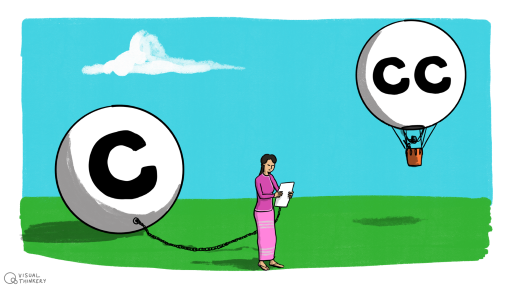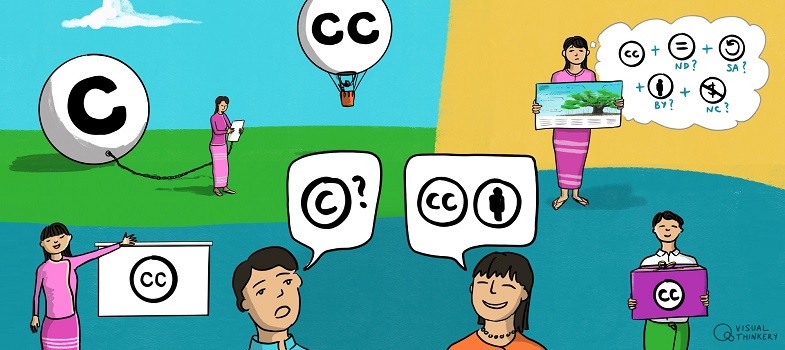Unit 1: What is copyright?
Introduction

What is copyright and why is it important?
Copyright is an area of law that regulates the way the products of human creativity are used – like books, academic research articles, music and art. Copyright grants a set of exclusive rights to a creator, so that the creator has the ability to prevent others from copying and adapting their work for a limited time. In other words, copyright law strictly regulates who is allowed to copy and share with whom.
Copyright law is an important area of law that affects many aspects of our lives, whether we are aware of it or not. Activities that are not regulated by copyright (such as reading a physical book) become regulated by copyright if technology is used to share the same book on the internet, for example. Because almost everything we do online involves making a copy, copyright is a regular feature in our lives.
The internet has given us the opportunity to access, share and collaborate on human creations – all governed by copyright – at an unprecedented scale. However, the sharing capabilities made possible by digital technology are in tension with the sharing restrictions embedded within copyright laws around the world.
You are probably aware that Myanmar has a new copyright law that was adopted in May 2019. This unit:
- provides background on the new Copyright Act
- explores Myanmar copyright law in relation to other regional and international copyright laws
- explores the new Copyright Act’s implication for higher education.
In Unit 2 we will discuss works that are no longer subject to copyright – these are called resources in the public domain – and will also introduce Creative Commons. Creative Commons was created to help address the tension between a creator’s ability to share digital works globally and copyright regulation. The default of ‘all rights reserved’ copyright is that all rights to copy and adapt a work are reserved by the author or creator (with some important exceptions that you will learn about shortly). Creative Commons licences work with copyright and enable a ‘some rights reserved’ approach, enabling an author or creator to free up their works for reuse by the public under certain conditions.
To understand how Creative Commons licences work, it is important that you have a basic understanding of copyright.
This unit has four sections:
- 1.1 Copyright basics
- 1.2 Myanmar copyright law
- 1.3 Global aspects of copyright
- 1.4 Exceptions and limitations of copyright
There are also additional resources if you are interested in learning more about copyright topics covered in or excluded from this unit.
This unit is important because Creative Commons licences and public domain tools depend on copyright in order to work. The intention of Unit 1 is to provide an overview of the basic concepts that are most important to understanding how Creative Commons licences operate. While some aspects of copyright law are harmonised around the world, the laws of copyright vary –sometimes dramatically – from country to country.
The information contained in this unit is not intended to be exhaustive or to cover all aspects of the complex laws of copyright around the world, or even every aspect of copyright that may impact how the licences operate in a particular situation. The description of Myanmar copyright law is for information purposes only and does not constitute legal advice.
